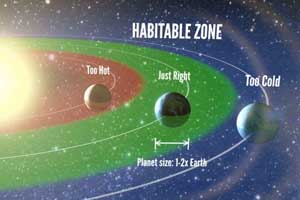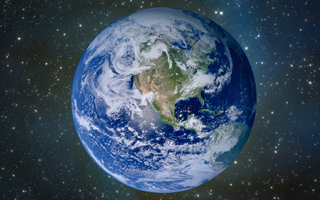
Temperatures must be “just right” for life to develop, astronomers say.(Photo: University of Hawaii/University of California)
There are likely “tens of billions” of Earth-like planets in our Milky Way galaxy, according to a study released Monday by astronomers from the University of California-Berkeley and the University of Hawaii.
“Planets like our Earth are relatively common throughout the Milky Way galaxy,” said astronomer Andrew Howard of the University of Hawaii, who gives an estimate of about 40 billion.
In fact, the nearest Earth-like planet may be “only” 12 light years away, which is roughly 72 trillion miles.
 In all, there are about 200 billion stars in the Milky Way, of which about 50 billion are like our sun. And of those “sun-like” stars, astronomers now estimate that about one in five stars (about 8.8 billion) have planets that are nearly the size of Earth and also have a surface temperature conducive to the development of life.
In all, there are about 200 billion stars in the Milky Way, of which about 50 billion are like our sun. And of those “sun-like” stars, astronomers now estimate that about one in five stars (about 8.8 billion) have planets that are nearly the size of Earth and also have a surface temperature conducive to the development of life.
Like Goldilocks tasting the porridge, temperatures must be “just right” for life to develop: Planets must have a so-called “habitable zone” with “lukewarm temperatures, so that water would not be frozen into ice or vaporized into steam but instead remain a liquid, because liquid water is now understood to be the prerequisite for life,” said Geoffrey Marcy, a professor of astronomy at Berkeley.
The discovery was based on the most accurate statistical analysis yet of all the observations from the Kepler telescope, a space observatory launched in 2009 specifically designed to locate planets around other stars.
The research was based mainly on an exhaustive, three-year search of Kepler data undertaken by Erik Petigura, a graduate student at the University of California, Berkeley.
“Now, for the first time, humanity has a measure of how common Earth-size planets are around sun-like stars,” Marcy added.
Howard estimated that our galaxy has 40 billion planets “for life to get started and to evolve.”
“The findings are robust, but you have to read the fine print to understand that the numbers are somewhat uncertain,” noted MIT astronomer Sara Seager, who was not part of the study. “Overall the result speaks to the growing findings that small planets are everywhere.”
